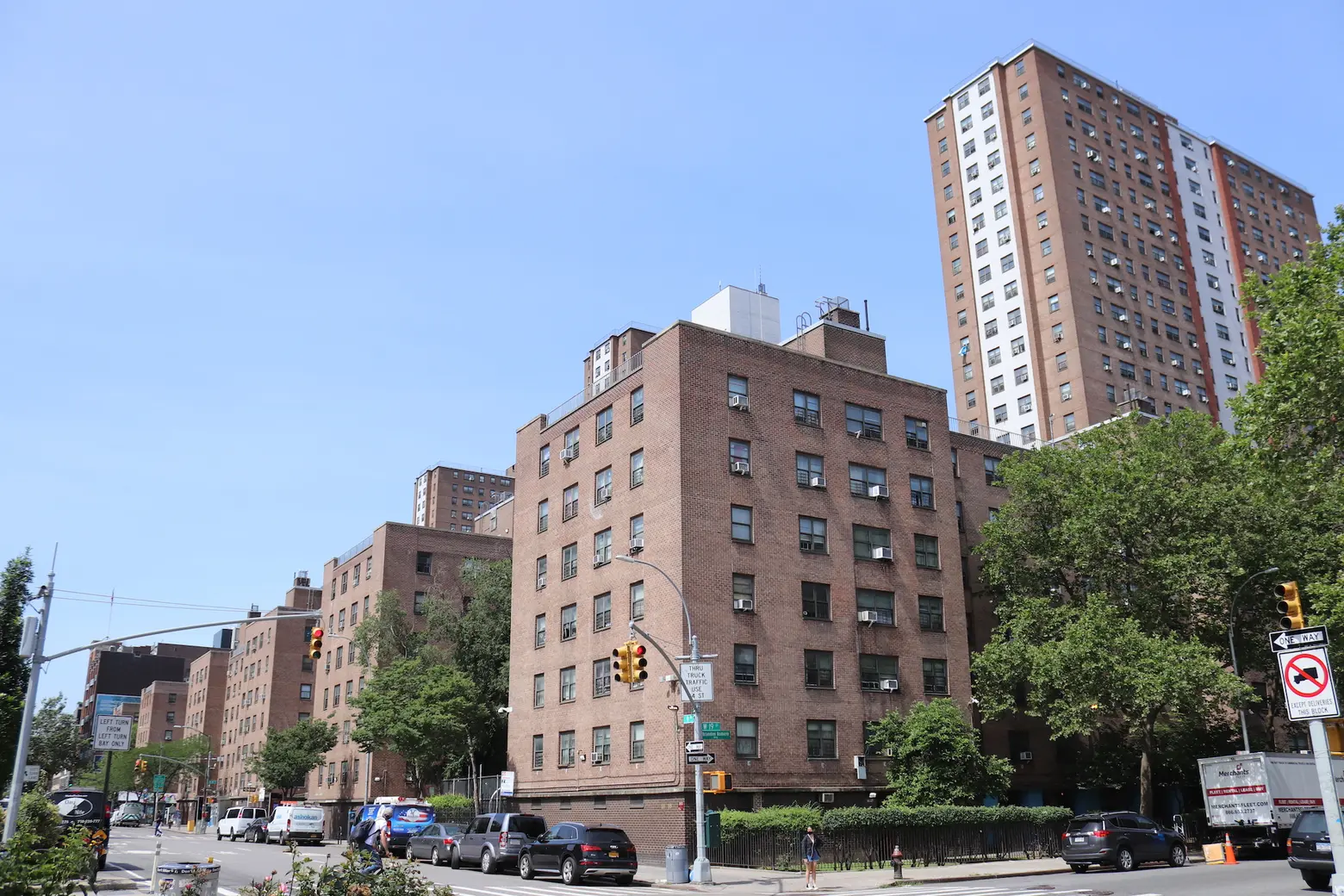NYCHA approves plan to raze and replace two Chelsea public housing complexes

Photo of the Fulton Houses complex courtesy of Elvert Barnes on Flickr
A plan to demolish and replace more than 2,000 public housing units in Chelsea moved forward on Wednesday. The board of the New York City Housing Authority (NYCHA) voted to advance a proposal to replace 18 buildings at the Fulton and Chelsea-Elliot Houses and make way for thousands of new market-rate apartments across the two campuses. The adoption of the Master Development Agreement kicks off the next phase of the project, the largest of its kind in NYCHA history.
Developed by Related Companies and Essence Development, the plan would replace all 2,056 existing homes with six brand-new buildings on both campuses. The development also includes roughly 3,500 new mixed-income apartments, including approximately 1,000 permanently affordable units.
Most current residents would remain in their homes while the new buildings are constructed, with tenants moving into their new homes in phases over the next seven years. Roughly 120 tenants—including residents of a building for seniors—would need to relocate temporarily before their new apartments are completed.
The new apartments would feature resident-controlled heating and ventilation, dishwashers, and in-unit washers and dryers. Buildings would also include common areas, multi-purpose community spaces, rooftop access, and lobby attendants.
There will also be on-site community resources, including healthcare facilities, community centers, grocery and retail stores, and outdoor recreational spaces.
Construction on one of the two NYCHA buildings is set to begin next year, depending upon the approval of an environmental review by the U.S. Department of Housing and Urban Development.
“While it’s taken a long time to get here and it’s going to take a long time to move on, this is a really important moment in the history of NYCHA’s transformation,” Jamie Rubin, NYCHA’s board chair, said at the board’s Wednesday morning meeting.
“The only way to restore NYCHA to the status that it once had, which is the glory of the United States public housing system, is to reinvest in the buildings at scale.”
Plans to demolish the two deteriorating public housing campuses have been circulating for years, but have only gained majority support from its residents as conditions continue to worsen. Residents regularly report leaks, mold, heating problems, broken elevators, and other issues. NYCHA previously estimated that it would cost around $40 billion to make repairs across the entire system.
The results of a survey conducted by NYCHA and the developers found that approximately 30 percent of eligible residents, roughly 950 people, responded to the survey, and 60 percent of those responses supported the redevelopment project.
While most survey respondents support the plan, opponents express concerns about potentially losing key rights as NYCHA residents, including the ability to pay rent based on a percentage of their income and the right to transfer their homes to family members. A coalition of tenants opposed to the plan presented the NYCHA board with a petition signed by 939 residents, according to Gothamist.
Officials have attempted to ease residents’ worries, promising them that they will keep the same lease rights throughout the project, though they may be forced to move into newer units that are smaller than their previous homes.
Mayor Eric Adams, developers Related and Essence, alongside NYCHA, have adopted a Master Development Agreement, marking the next phase of work on the project. The agreement includes a “Bridge Plan,” which will provide repairs and resources to residents of the NYCHA campuses while their new homes are being constructed.
“We are excited to embark on this next phase of work at Fulton and Elliott-Chelsea Houses, which represents a significant step toward enhancing the quality of life for our residents,” NYCHA CEO Lisa Bova-Hiatt said.
“The Bridge Plan not only addresses immediate needs through vital repairs and improvements, but is also anchored in the Master Development Agreement, which sets the stage for delivering safe, modern housing and amenities for generations to come.”
The agreement outlines several key principles, including a one-for-one replacement of all NYCHA homes, keeping 94 percent of affected households in their current homes during construction, bolstering NYCHA property management, and reimagining the new campuses as mixed-use communities that offer essential housing, amenities, and retail for the neighborhood.
Resident voices will also play a central role in the planning and design of each campus, and residents’ rights will be preserved through NYCHA’s PACT program, which states that residents have the right to a new apartment or the right to return to one if temporary relocation is required.
“All New Yorkers, especially our residents in public housing, deserve to live in safe, high-quality, and dignified housing — and for the first time ever in city history, we are completely rebuilding existing NYCHA developments through PACT and ensuring that all existing residents will have brand new apartments on their home campuses,” Adams said.
NYCHA officials and tenant leaders appointed Related Companies and Essence Development to manage the project in December 2021, according to NYCHA. At the time of their selection, the plan involved a $366 million renovation of the two public housing buildings, which included rehabilitating the apartments and adding new heating systems, plumbing, security systems, and more.
In June 2023, NYCHA announced a $1.5 billion plan to demolish the Elliot-Chelsea and Fulton Houses and rebuild them, plus thousands of additional market-rate apartments.
The plan is only the third time in NYCHA’s 90-year history that a housing complex will be torn down, and the first time that new, mixed-income buildings will be built on NYCHA property.
RELATED:




























